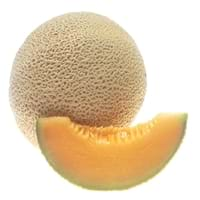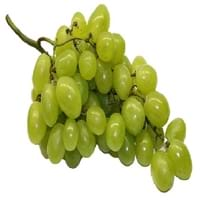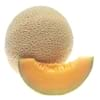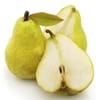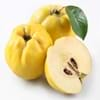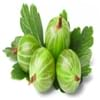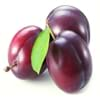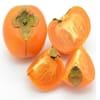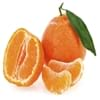Health Benefits
Cancer prevention, Heart care, Improves eye vision, Prevents diabetes, Reduces stress
Cancer prevention, Kidney stone treatment, Prevents constipation, Treatment of alzheimer's disease
General Benefits
Boosts immune system, Cures cough, Cures fever, Digestive aid, Eye care, Helps in weight loss
Digestive aid, Improves eye vision, Maintains healthy cholesterol level, Treatment of migraine
Skin Benefits
Anti-aging benefits, Hydrates skin, Skin rejuvenation, Treatment of skin diseases
Anti-aging benefits, Heals sunburn, Skin rejuvenation, Treatment of dark spots
Hair Benefits
Good conditioner, Prevents hair loss, Protects hair
Prevents hair loss, Regulates hair growth, Treatment of dandruff
Allergy Symptoms
Abdominal pains, Anaphylaxis, Breathing difficulty, Diarrhea, Dizziness, Hives, Itching of mouth, Nasal congestion, Nausea, Vomiting
Anaphylaxis, Asthma, Breathing difficulty, Coughing, Drop in blood pressure, Hives, Skin rash, Stuffy nose, Swelling of mouth, tongue or lips, Wheezing
Side Effects
Allergic reaction, Bloating, Indigestion
Allergic reaction, Skin rash, Might slow down the process of blood clotting
Best Time to Eat
As a snack in the late afternoon, Don't consume at night and before bed, Eat the fresh ones, avoid mixing with any other foods, don't eat after meal., Morning time (before lunch)
As a snack in the late afternoon, Don't consume at night and before bed, Eat the fresh ones, avoid mixing with any other foods, don't eat after meal., Morning time (before lunch)
Vitamin B5 (Pantothenic Acid)
Vitamin C (Ascorbic Acid)
Vitamin K (Phyllochinone)
Calories in Fresh Fruit with Peel
Not Available
Calories in Fresh Fruit without Peel
Not Available
Calories in Canned Form
Not Available
Season
Summer
Autumn, Summer
Varieties
Hales Best Jumbo, Sweet 'N Early Hybrid, Hearts of Gold, Ambrosia, Athena, Honey Bun Hybrid, Fastbreak and Superstar
Cabernet Sauvignon, Merlot, Pinot Noir, Syrah/Shiraz and Zinfandel
Inside Color
Creamy Orange
Light Green
Taste
Juicy, Musky, Sweet
Sweet-Sour
Origin
Africa, India
Western Asia, Central Europe
Soil Type
Sandy
Clay loam, Sandy loam
Climatic Conditions
Dry, Hot
Warm
Facts about
- Cantaloupe is known as rock-melon in some parts of the world.
- Christopher columbus first introduced cantaloupes to north america in 1494.
- The name 'Cantaloupe' as it is cultivated in papal gardens of cantaloupes, Italy.
- If left alone, a grapevine can spread 50 feet and even more.
- There are more than 8,000 varieties of grape worldwide.
- They are available in 7 different colors: red, green, white, black, purple, blue and golden.
Other Countries
Iran, Romania, Turkey, United States of America
Argentina, Armenia, Australia, Chile, France, Iran, Italy, Portugal, Romania, Turkey, United States of America
Top Importer
United States of America
United States of America
Botanical Name
Cucumis melo var. cantalupensis
Vitis vinifera
Synonym
Cucumis melo var. reticulatus
Not Available
Subkingdom
Tracheobionta
Tracheobionta
Division
Magnoliophyta
Magnoliophyta
Class
Magnoliopsida
Magnoliopsida
Subclass
Dillenhidae
Rosidae
Order
Cucurbitales
Vitales
Family
Cucurbitaceae
Vitaceae
Species
C. melo
Vitis vinifera
Generic Group
Gourd
Grape
Compare Cantaloupe and Grape
It is important compare Cantaloupe and Grape as both the fruits have a different nutritional value. Their comparison can be done on the basis of their vitamin and mineral content, calories, benefits as well as characteristics, making it easier for us to choose the best fruit for our diet. Their general health benefits are as follows:
Cantaloupe Benefits: boosts immune system, cures cough, cures fever, digestive aid, eye care and helps in weight loss.
Grape Benefits: digestive aid, improves eye vision, maintains healthy cholesterol level and treatment of migraine.
Fruits are also used as a remedy for various hair problems. The hair benefits of Cantaloupe are: good conditioner, prevents hair loss and protects hair and hair benefits of Grape are: prevents hair loss, regulates hair growth and treatment of dandruff. Some fruits are known to cause allergic reactions. The allergy symptoms of first fruit are: abdominal pains, anaphylaxis, breathing difficulty, diarrhea, dizziness, hives, itching of mouth, nasal congestion, nausea and vomiting and the symptoms of second fruit are: anaphylaxis, asthma, breathing difficulty, coughing, drop in blood pressure, hives, skin rash, stuffy nose, swelling of mouth tongue or lips and wheezing. Get sorted Cantaloupe vs Grape comparison with the help of fruit comparison tool by fruitvs.com.
